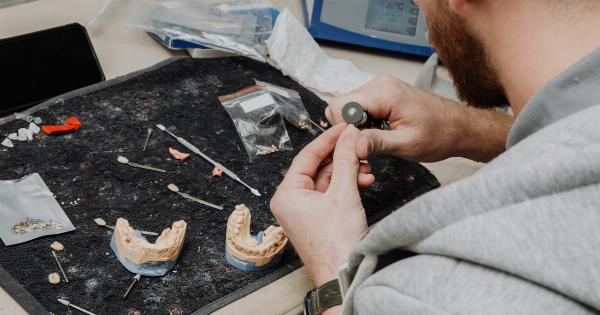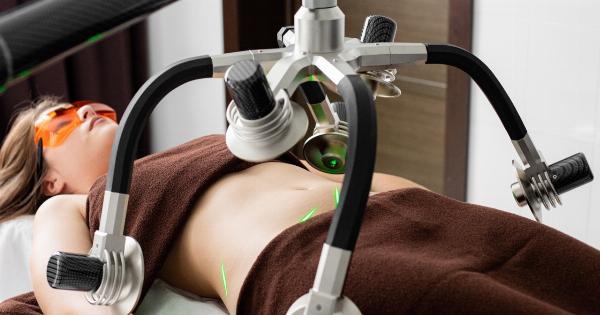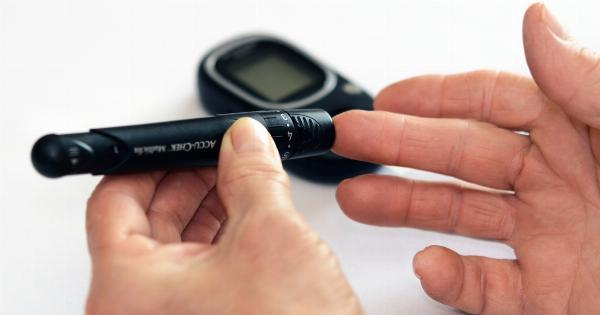Hemorrhoids or piles are a common condition that affects many people worldwide. It is a swelling or inflammation of the veins present in the anal area or rectum.
Hemorrhoids can be painful and cause discomfort, making it difficult to sit, stand or move around normally. While there are several options available for the treatment of hemorrhoids, many people shy away from seeking help due to the fear of painful procedures.
However, with the advancement in medical technology, a new revolutionary painless treatment for hemorrhoids has emerged. The treatment is minimally invasive and requires no anesthesia or hospitalization, making it a popular choice for many patients.
In this article, we will discuss this revolutionary painless treatment for hemorrhoids.
What Causes Hemorrhoids?
The exact cause of hemorrhoids is not known, but certain factors that can increase the risk of developing hemorrhoids include:.
- Straining during bowel movements
- Chronic constipation or diarrhea
- Pregnancy
- Aging
- Obesity
- Lack of physical activity
- Poor dietary habits
Symptoms of Hemorrhoids
The symptoms of hemorrhoids may vary depending on the type of hemorrhoids and the severity of the condition. Some common symptoms of hemorrhoids include:.
- Bleeding during bowel movements
- Pain or discomfort during bowel movements
- Swelling or protrusion in the anal area
- Itching or irritation in the anal area
- Mucus discharge
Traditional Hemorrhoid Treatments
Traditionally, treatments for hemorrhoids involved painful procedures like rubber band ligation, sclerotherapy, and surgery. While these treatments are effective, they come with their fair share of side effects and risks.
Rubber band ligation and sclerotherapy are painful procedures that involve injecting a chemical solution or tying a rubber band around the affected area to stop the blood flow. Surgery is another option, but it is invasive and requires anesthesia and hospitalization.
Revolutionary Painless Hemorrhoid Treatment
A new revolutionary painless treatment for hemorrhoids has emerged in recent years, and it is gaining popularity among patients.
The treatment is called Infrared Coagulation (IRC), and it is minimally invasive, requires no anesthesia, and is virtually painless.
The Infrared Coagulation (IRC) treatment involves the use of infrared light to coagulate the blood vessels in the inflamed or swollen area of the hemorrhoid.
The coagulated blood stops the flow of blood to the hemorrhoid, and it eventually shrinks and falls off. The procedure is quick, takes only a few minutes, and can be performed in an outpatient setting.
Benefits of Infrared Coagulation (IRC) Treatment
There are several benefits of Infrared Coagulation (IRC) treatment for hemorrhoids, including:.
- Minimally invasive: The procedure is minimally invasive and does not require hospitalization or anesthesia.
- Painless: The procedure is virtually painless and does not cause discomfort or bleeding.
- Effective: The treatment is effective and can provide long-term relief from hemorrhoids.
- Quick: The procedure takes only a few minutes to perform.
- No downtime: There is no downtime, and patients can resume their normal activities immediately after the procedure.
- Low risk of complications: The procedure has a low risk of complications, and patients can avoid the risks associated with traditional treatments.
How Does Infrared Coagulation (IRC) Treatment Work?
The Infrared Coagulation (IRC) treatment works by coagulating the blood vessels in the swollen or inflamed area of the hemorrhoid. The coagulated blood stops the flow of blood to the hemorrhoid, causing it to shrink and eventually fall off.
The procedure is performed by an experienced medical professional and can be completed in just a few minutes.
Who is a Good Candidate for Infrared Coagulation (IRC) Treatment?
Infrared Coagulation (IRC) treatment is a suitable option for patients with grade 1 or 2 internal hemorrhoids. Patients with severe or complex hemorrhoids may need other treatments such as surgery or rubber band ligation.
The procedure is safe and effective for most patients and is often recommended as a first-line treatment for hemorrhoids.
What to Expect During Infrared Coagulation (IRC) Treatment?
The Infrared Coagulation (IRC) treatment is a quick and painless procedure that can be performed in an outpatient setting. The patient is positioned on the examination table in a comfortable position.
The doctor then inserts a small probe into the rectum to locate the hemorrhoid. The probe emits infrared light onto the affected area, coagulating the blood vessels and causing the hemorrhoid to shrink.
The procedure is quick, taking only a few minutes to complete. The patient may experience a mild sensation of heat or warmth during the procedure, but it is not painful. After the procedure, the patient can resume their normal activities immediately.
Recovery After Infrared Coagulation (IRC) Treatment
Patients who undergo Infrared Coagulation (IRC) treatment for hemorrhoids can resume their normal activities immediately after the procedure. There is no downtime, and patients do not need to take any time off from work or school.
The patient may experience mild discomfort or bleeding after the procedure, but it usually resolves on its own within a few days. The doctor may recommend over-the-counter pain medication or warm sitz baths to ease the discomfort.
Conclusion
Hemorrhoids can be a painful and uncomfortable condition, but there is no need to suffer in silence. With the revolutionary painless treatment of Infrared Coagulation (IRC), individuals can seek help without fear of painful procedures.
The treatment is minimally invasive, requires no hospitalization, and is virtually painless. It is a safe and effective treatment option for most patients with grade 1 or 2 internal hemorrhoids. If you are experiencing symptoms of hemorrhoids, consult your doctor to discuss the best treatment options for your condition.



























